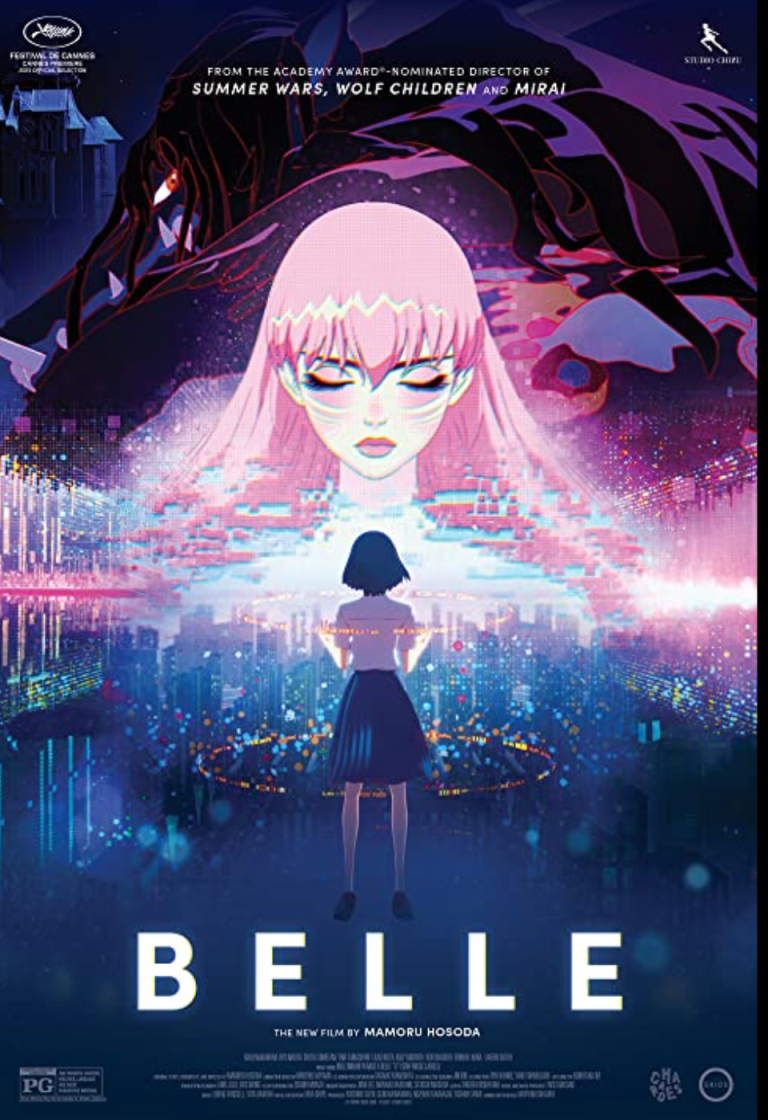
Synopsis : Suzu is a shy, everyday high school student living in a rural village. For years, she has only been a shadow of herself. But when she enters “U”, a massive virtual world, she escapes into her online persona as Belle, a gorgeous and globally-beloved singer. One day, her concert is interrupted by a monstrous creature chased by vigilantes. As their hunt escalates, Suzu embarks on an emotional and epic quest to uncover the identity of this mysterious “beast” and to discover her true self in a world where you can be anyone.
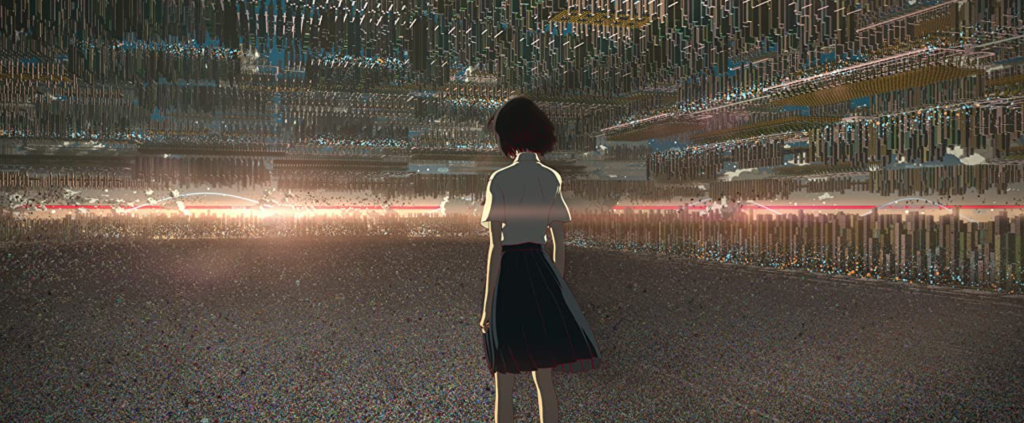
An Exclusive Interview with Director Mamoru Hosoda on “Belle”
Q: It seems obvious that you were influenced by the animated film “Beauty and the Beast.” When the unfinished version of the original anime was screened at the New York Film Festival, it still was highly praised by critics. Many animators were influenced by that film. What motivated you to make it?
Mamoru Hosoda: After I graduated from university, I joined Toei Animation in 1991. When I started working there, it was very difficult and demanding. I started wondering if there was any work other than animation [that I could do]. Around that time in 1991, Disney animation released “Beauty and the Beast” in the United States but in Japan it came out in 1992. When I saw it, I thought it was marvelous. Until then, I was thinking of quitting my animation job, but when I saw the movie, it made me think that I could make such a wonderful movie in the future. It made me think that I could do my best work in the animation world.
It was a very special movie for me. At that time when I started working there, I was poor, but I bought the movie’s box set for 20,000 yen (around $200). In that set, was a work-in-progress that was screened at the New York Film Festival. From a professional point of view, I got a glimpse of how complicated the process behind Disney’s animation studios is. It was a learning experience for me, and the work itself encouraged me to go further. After all, it was a very important work for me.
Q: The reason why you made a high school girl as a main character in this film because you wanted to tackle the subject of coordination and pressure of her classmates while taking classes in the closed environment of school?
Mamoru Hosoda: Originally, I thought it would be interesting to do “Beauty and the Beast” in the world of the Internet. I thought that the two sides of “Beauty and the Beast” and the two sides of the Internet would resonate with each other. Initially I thought that the two sides — the beast’s violent appearance and his gentle heart — and those of the Internet are [not that much] different from the real world [versus] the world of yourself on the Internet.
At times, I thought a modern beauty is a person who looks [out from] the corner of the class. I wasn’t thinking of a person who’s at the center of the class.
On the Internet, I can connect with people all over the world, but on the other hand, it can drive my loneliness, because relationships that seem close to me are visualized in the group line, so the hierarchy in school appears in a very visible way. Under such circumstances, if the subject is the Internet, individuals were being oppressed, and I wanted to draw it firmly like the current situation.
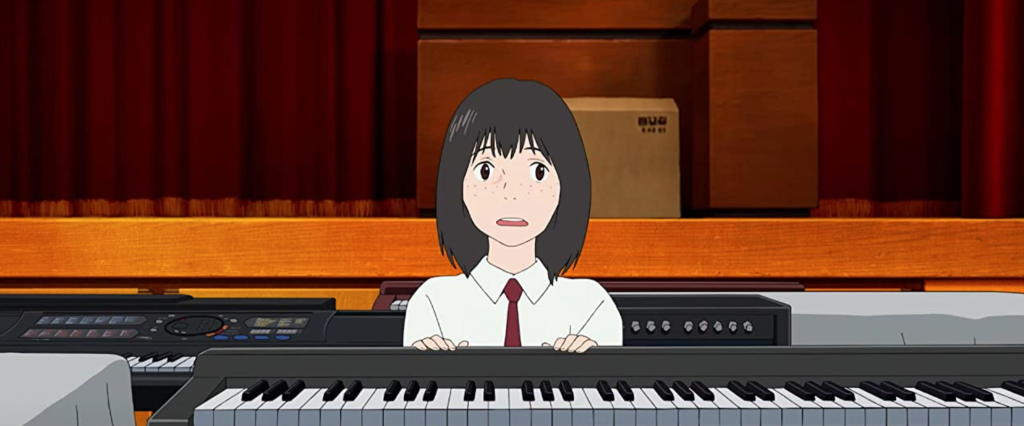
Q: People in their ‘30s and older have experienced a time when there was no Internet, but now, children who have lived in the world of the internet ever since they were born are more sensitive to reactions on the Internet than are adults — and they’re more affected by it. Adults can distance themselves from the internet. In this film, I think it’s important to depict the deviation between adults and children when they interact with the internet, isn’t it?
Mamoru Hosoda: There’s a big difference in perception. The Internet is a tool for us [adults] which allows [one] to email or chat instead of writing or calling. But for younger people, it’s another reality. For them, it’s been around since they were born; the fact that there’s another “real” world on the Internet is a reason for generational differences and detachment. The Internet itself is changing society and is an indispensable part of the real world. Something like the Meta-verse is happening, and we will live with the presence of these two worlds into the future.
It’s happening soon. In this movie, by focusing on young people, it is easier to understand what the future we will experience will be like. Under such circumstances, it’s easy to see how young people are affected by its potential and what kind of places they are affected by. Even in this movie, before the students fall in love in the real class, as in “Beauty and the Beast,” the students live in an oppressed situation where the hierarchy of the school cliques in the class can’t be overcome at first. I thought it was necessary to express such a reality, so I drew it [forcefully].
Q: How did you meet Eric Wong, who created U — the virtual world of the Internet — in this film. Did you create this world together? It’s so beautiful — many American critics are raving about it — it’s something that we can see in Disney films as well.
Mamoru Hosoda: I’ve been making movies about the Internet such as “Digimon Adventure: Our War Game” and “Summer Wars” for 20 years. After that, I created an idea of the Internet that’s more realistic now.
There’s also the process of thinking about how to make it visual. This time, however, the story was originally about the main character whose talents bloom on the Internet, so I thought that there’s talent there in reality as well. I searched for such hidden talents and found someone I could work with.
I was looking for someone for quite a bit of time. Under those circumstances, I found a portfolio on the Internet and the work was so good that even though I didn’t know who it was, I contacted him. That was Eric Wong, a 27-year-old living in London. He was a young architect. He is very talented, and what he expressed in his architecture matched the way I actually imagined [the virtual world of the Internet]. The way to create it was to make an abstract leap forward — to express a dizzying big city where reality and the Internet were infinitely intertwined. I drew it with a focus on that. Even though he is more of a virtual architect [he had great ideas].
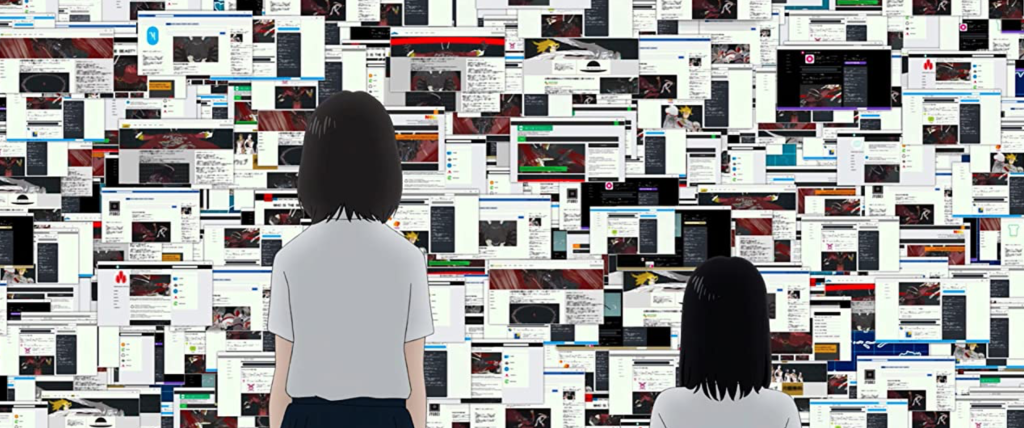
Q: Is he an architect who expresses himself through his images?
Mamoru Hosoda: That’s right. He’s not an architect who actually builds a house, but more of a conceptual architect. It was lucky that I found him, because he was this kind of conceptual architect. Under such circumstances, it seems that we created a new way to express the world of the Internet while trading ideas with each other.
Q: Kaho Nakamura seems to have no experience in acting previously. She’s not only attractive for her singing, but also as a voice actor. How did you discover a talent like her?
Mamoru Hosoda: This work is centered around her songs. I thought it was unavoidable if I didn’t [showcase] the expressive power of the songs. I was looking for an actor who could sing a song, a voice actor who could also sing and a musical actor as well. At that time, I was only able to see the parts that were good at singing, so there were a lot of people who might get high scores in karaoke, but the fact that they’re good at singing didn’t mean they couldn’t express themselves as an actor as well. So I thought it was a little different. People who are good at singing are not always expressive actors.
Under such circumstances, I found Kaho Nakamura was a special person. I listened without prejudice when she auditioned, but she was very real and vivid. She had a very different approach than an actor. However, people who can sing a song like Lady Gaga or Mamoru Murai of Ging Nang BOYZ may play a role in the film, which is different from being a regular actor. It has a certain charm.
Of course, not all of them are good at it, but even among musicians, there is a person who had a different charm from being an actor, and that was Nakamura. It was great to find her. She’s not a very famous person, but I was happy that many people saw this movie in Japan and knew that there was a great musician like Nakamura.
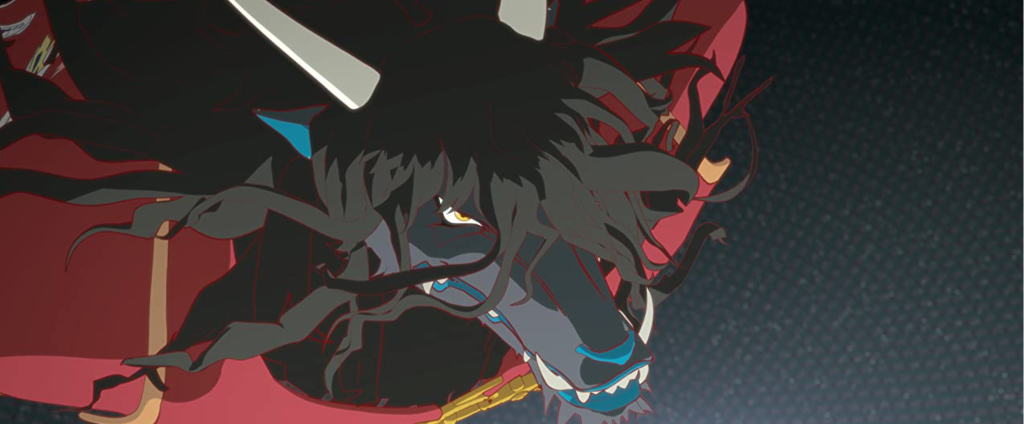
Q: While we were in the Covid lockdown, we heard the terrible news about the suicide of some major actors in Japan, and many people became anxious about the future. In this film, the violence of words and the love of words, or in conceiving a love of words, is all part of “life and death.
” What part did you pay attention to when drawing this work?
Mamoru Hosoda: The Internet is not just a tool, but a world that has had an impact on the lives and deaths of people. With the current problem of slander on the Internet, there are various problems such as fake news and the lack of political neutrality. Even at the Tokyo Olympics last year, there was a great deal of slander against athletes, and the cancel culture was apparent.
There’s a global tendency to be too aggressive towards people during this pandemic. After all, I would like to draw such a reality, but even then, I wanted to draw both bad and good things, not only troublesome problems, but also the good things [that come] through the Internet.
I wanted to draw a part where the main character —who embodies such a thing — commits to the problem that people who meet through the Internet are being asked [to do so] in reality.
When this main character, Suzu, was young, her mother died through a riverside accident, and her mother helped a child who didn’t even know his name, and though her mother died, Suzu grew up. And then, like her own mother, Suzu will help boys who don’t even know her name through the Internet. By doing so, Suzu takes over and embodies the ideas of her mother, which she didn’t understand at that time.
I wanted to draw on the Internet, not just the traumatic aspects of it, but how it can help overcome something and prompt growth.
Q: What do you want American audiences to learn from your work? It would be great for it to beat a Disney movie at the Academy Awards, how about it?
Mamoru Hosoda: I don’t know if it will be nominated for an Academy Award, but in the changing world that we’re living in, this work “Belle [US title]” has been put together and represents a changing of the modern age. After all, I think that what changed and what did not change by using the movie “Beauty and the Beast” as a base is reflected in the film. What kind of person would you call a former beauty in the present age? Through the strength of protecting another person and meeting another person through the Internet and becoming stronger.
In the present age, I wanted to find beauty, and was able to express that through this animation. Animation tends to be for children, But we will face the present age problems and create works for young people who are surviving current problems. Through my work, I think that society can be changed by my drawings. For better or for worse, by removing the prejudice against animation, it can work for adults and children who are involved in this modern Internet — everyone is looking for ways to live in a changing society. My work focuses on that. I would like everyone to see such a place.
Here’s the trailer of the film.

